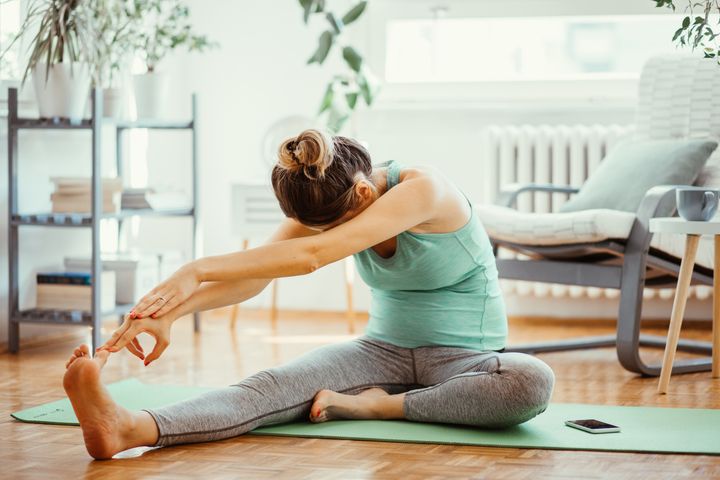News
5 Exercises You Should Do In The Morning, According To Experts
There are no shortage of reasons why exercising regularly makes you feel good, no matter what time of day you choose to do it. However, if you have flexibility in your schedule, experts argue that an early workout can have positive and lasting effects on your entire day.
In addition to being “a great release for any tension your body holds,” said celebrity fitness expert Ridge Davis, “exercise helps build your endurance and ability to handle stress … the less stress you have, the more energy you have to use for your day.”
Since feeling mentally and physically exhausted aren’t at the top of anyone’s to-do list, it makes sense to get moving early.
“Being active has a profound impact on mental health by boosting and enhancing mental clarity and judgment,” added Magdalena Cadet, a board-certified rheumatologist at NYU Langone. “Exercise helps the body produce feel-good chemicals (endorphins) which can stimulate parts of the brain, help distract a person from anxiety as well as build confidence.”
Beyond boosting energy and reducing stress, morning exercise also benefits many of the body’s internal and external functions, like boosting metabolism, Cadet said. Consistent morning workouts can also enhance your sleeping habits.
“There are studies that suggest that early morning workouts may shift a person’s body clock so that there is more alertness in the early hours, which may result in improved sleep quality,” Cadet explained. The research showed that exercising at 7 a.m. may be the most optimal time.
Committing to a morning workout routine is an accomplishment on its own ― the best way to work out is to do something you enjoy. Fitness shouldn’t feel like punishment, but rather should be a celebration of movement and something you do to feel good. But, there are also specific moves you can do if you want to maximize the benefits of morning fitness. Here’s what experts suggest trying:
A full-body warmup
Before starting any morning exercises ― or if you just want to get some simple movement in ― certified personal trainer Lisa Mateo suggested doing some quick full-body work.
Mateo recommended stretching your “quads, hamstrings, hips, shoulders and triceps … along with a few cardio moves, like jumping jacks or high-knee runs, to get the heart rate going.”
A Tree Pose to activate your legs and core
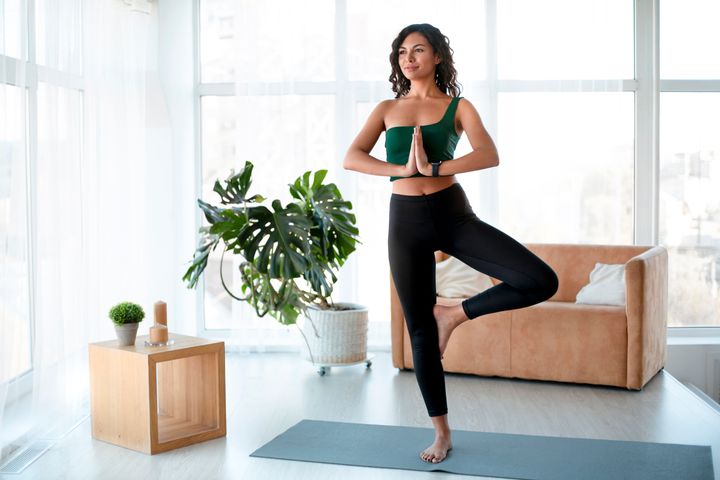
According to Peloton yoga and meditation instructor Kristin McGee, the standing yoga posture known as Vrikshasana ― or Tree Pose ― is the perfect starting point for a morning exercise. The pose “promotes balance and stability in the legs and core,” McGee said.
McGee also credits the yoga move with “helping to focus the mind,” which is an important factor in “setting yourself up for a successful day.”
To properly execute Tree Pose, McGee instructs her students to “start by standing tall with your back straight, shoulders relaxed and both feet together (ankles and inner foot points touching).”
“Once feet feel firmly planted, shift your weight to your right foot, lift your left foot off the floor, bend your left knee and position your left foot onto the inside of your right thigh,” she continued.
Once your legs are in a stable position, your arms can remain in prayer position in front of your heart or you can raise them above your head. However, McGee advised anyone with concerns about their balance to “place your hand on the wall or a table for support or keep your foot lower at the ankle.” The pose should be held for five to 10 breaths and then repeated on the opposite side.
A Downward-Facing Dog to wake up your body and brain
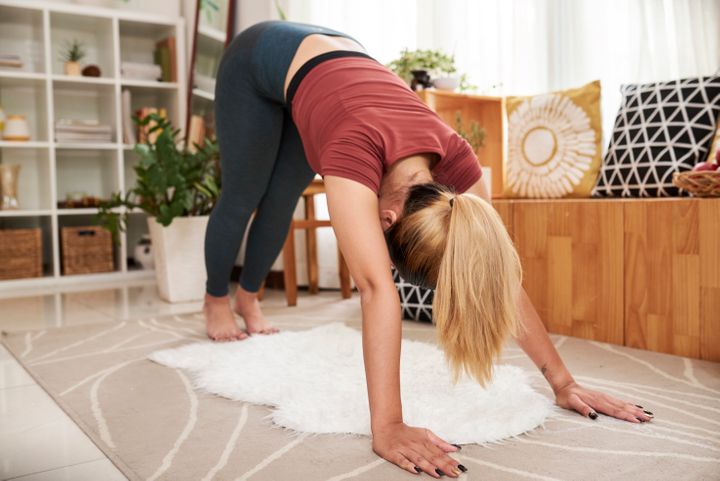
Another great yoga move to do in the morning is Downward-Facing Dog. McGee is a fan of the pose because of its ability to “stretch and strengthen the entire body.” The move also “gets blood flowing to the brain, which is great for waking up,” McGee said.
The move, as its name suggests, is very much reminiscent of the way “a dog wakes up from a nap … and stretches their entire body with a nice arch,” McGee explained. Humans can mimic the motion by beginning on all fours keeping wrists in line with shoulders and toes tucked.
On an exhale, push your hips up and straighten your legs. Gently continue to push upward, engaging your arms while moving your shoulders away from your ears.
“Keep your core, legs and arms engaged and your kneecaps lifted, and pedal your legs back and forth to loosen up any tightness in the legs or lower back,” McGee added.
Dead Bug to fire up your core and prevent back pain
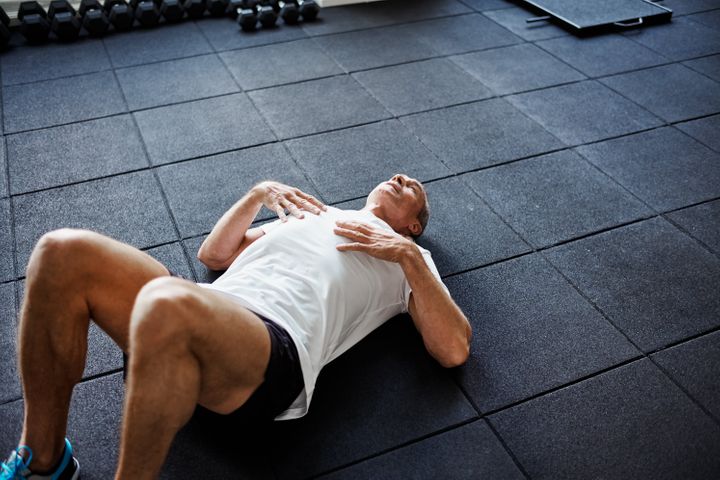
Davis said he personally loves doing a move called the Dead Bug in the morning to help with core stability. He relies on the exercise to “strengthen core muscles and prevent lower back injury,” he said.
This move is best performed on a padded mat, and proper form is vital to its success. To prepare for the move, Davis instructs clients to “lay on your back with knees bent and feet flat on the floor and arms straight alongside your torso.” Keep in mind that “the main goal is to keep the lower back firmly pressed into the floor during the movement,” he added.
Once in the starting position, lift your hands with elbows above your shoulders and fists facing each other. Exhale and raise your legs with knees directly over your hips then slowly lower your right arm and left leg until they’re just above the floor. (Here’s a video to give you more of a visual.) On an inhale, bring them back to the starting position and repeat the entire motion on the opposite side to complete one repetition. Beginners should aim for two to three sets composed of five reps on each side.
Squats to improve overall mobility
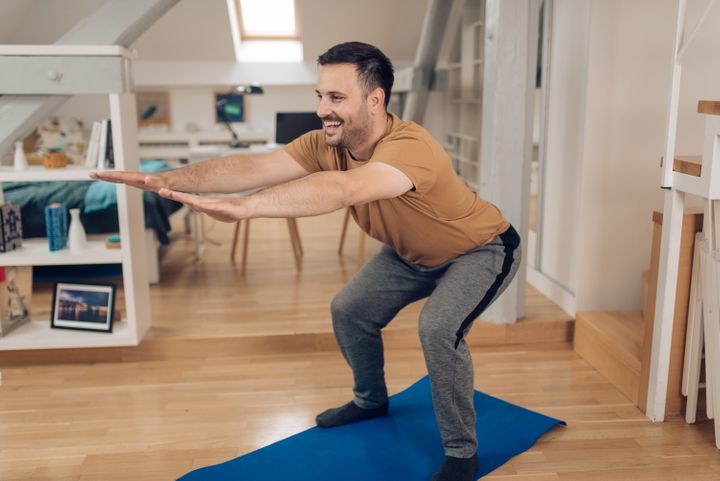
Cadet favors squats because they benefit many functions of the body all in one move.
“Squats are one of my favorite exercises, especially in the morning,” she said. “They help improve mobility while working the ligaments and connective tissue.” Squatting can also aid in joint support, she added.
However, beware if you have any injuries or conditions that may prevent you from doing this exercise.
“Individuals with knee, back or hip issues of any sort should avoid squats altogether or discuss modifications with a licensed professional,” Cadet said.
Correct form is the key to reaping rewards from squats. Begin with knees bent and feet flat on the floor. “Hips and ankles should be facing outward,” Cadet said, adding that you should not extend your knees past your toes and you should keep your legs no wider than shoulder width apart.
Envisioning your torso in a vertical line will straighten your posture and make the move more functional, Cadet said. Then, with your chest up and thighs parallel to the floor, tighten your abs and push your butt backward. Keep your core engaged while in position to help with stabilization.
Beginners should aim to hold the position for five seconds and aim for 10 to 15 reps. Extending your arms in front of you, adding light weights and aiming to sit even deeper in the stance will advance the exercise.
Read more

